LabGuy's World: 1972 Cartrivision MCA-0001 Instant Replay Vidicon Camera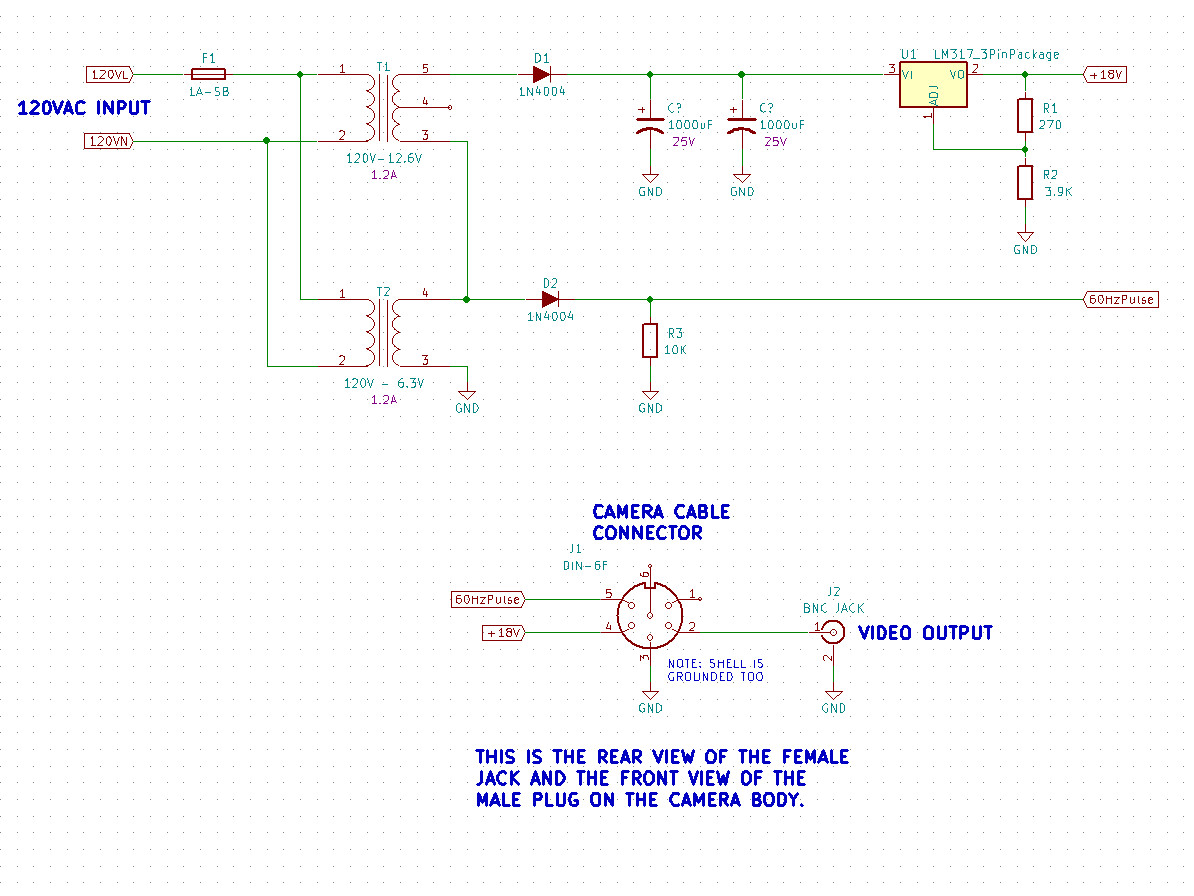
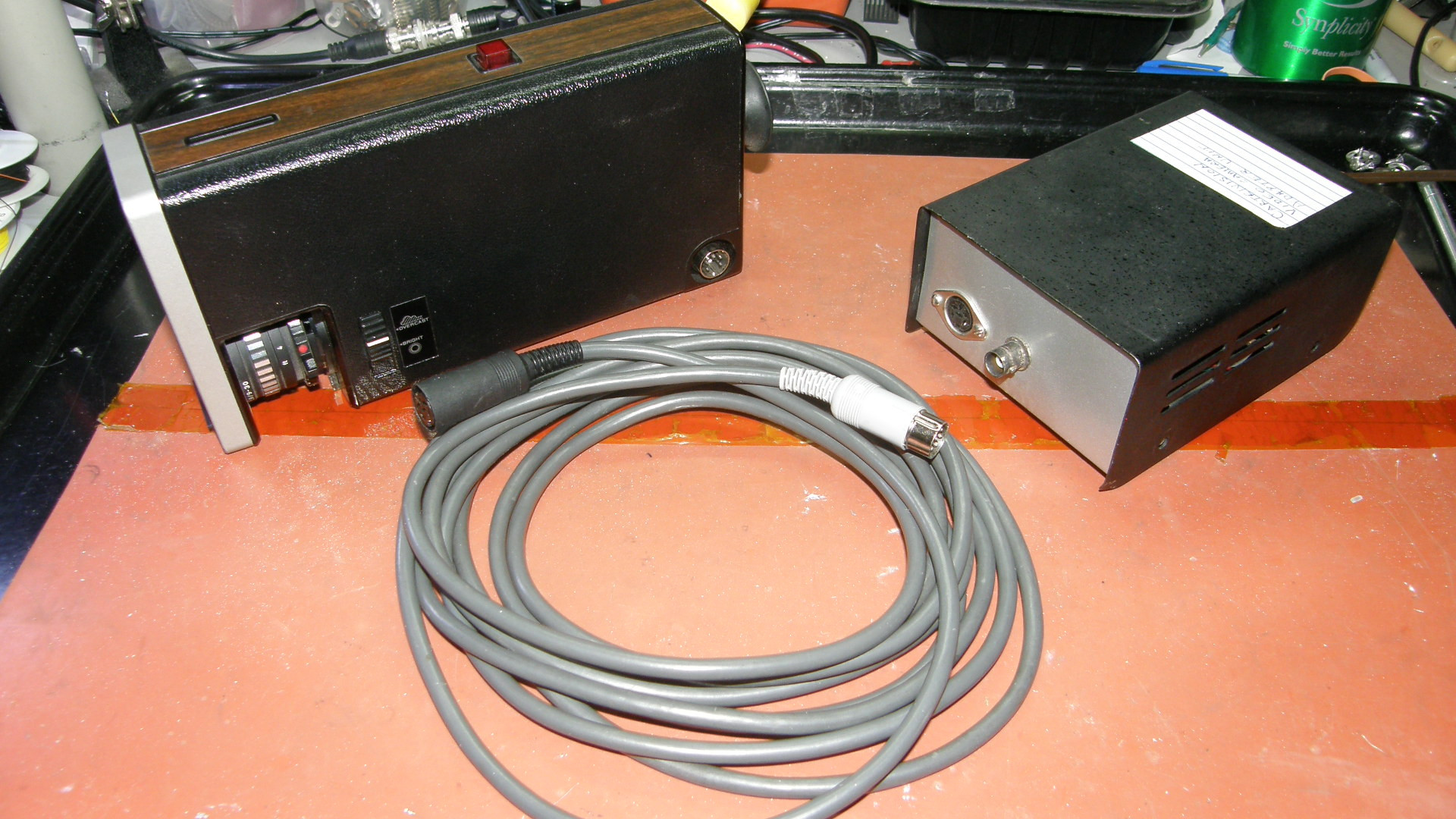
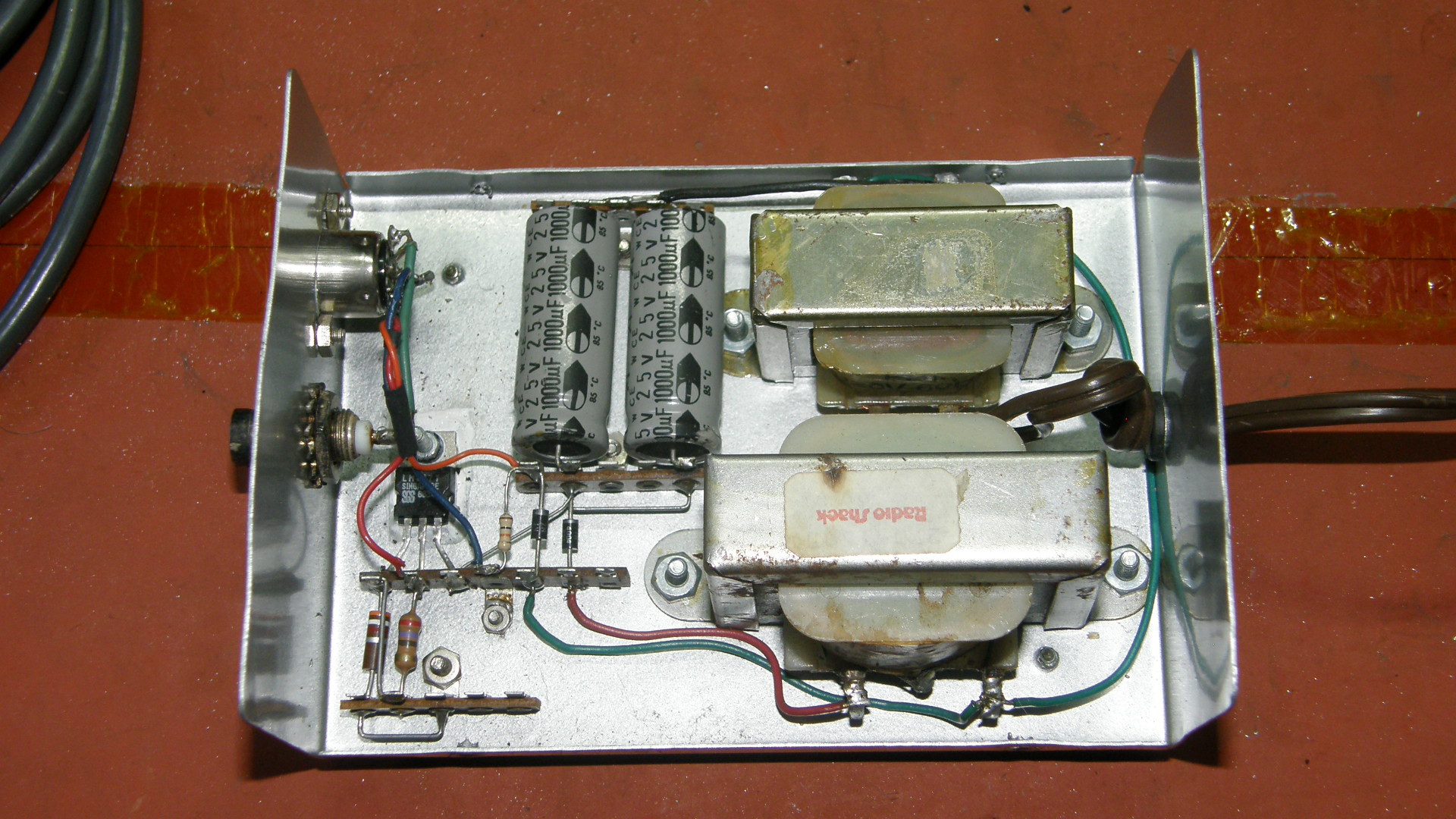
NEW for 2019! - How to make your Cartrivision camera operate You will need to construct the power supply shown in the schematic above. It is not too difficult. Mine fits in a box that is 6" x 4" x 2.5". Both transformers are rated for 1.5 Amp output. The big one is 12.6V and the smaller is 6.3 volt output. Both operate on 120VAC. The diodes are general purpose rectifiers. You have a lot of latitude with these too. Be sure they can handle at least 2amps and 30 volts or more. Any capacitance above 2,000uF and 25V is fine. I replaced the two 1000uF/25V capacitors with a single 2,200uF/35V unit. The voltage regulator is a common programmable type LM317. Be sure to insulate it from the case with a mica pad and plastic washers. Heat sink grease is recommended as it is dropping about 10 volts at around 800mA. This supply does not have a fuse or power switch, but both are highly recommended. (I bought this power supply on Ebay way back in 2004, I am not the original maker!) 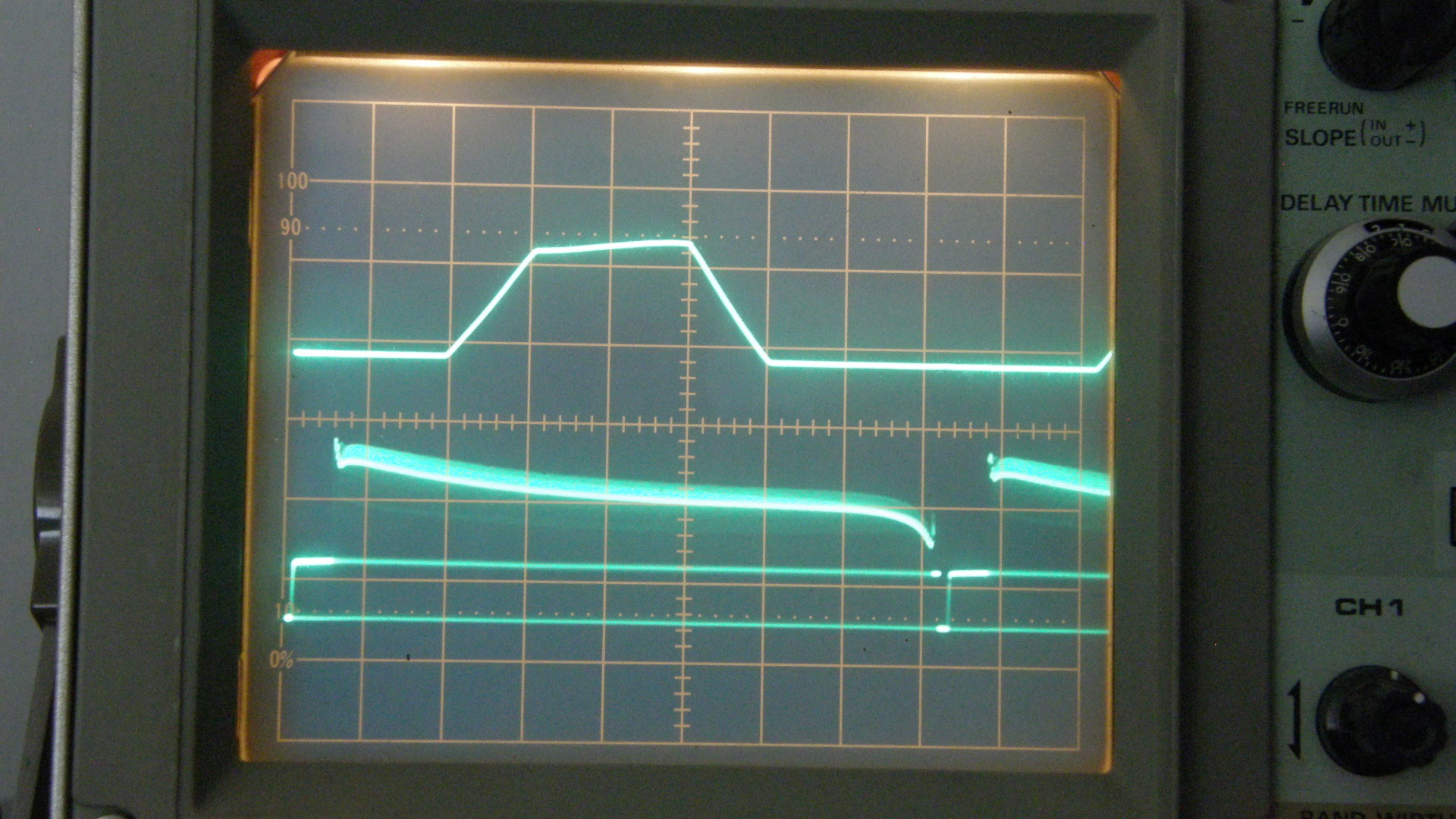
Scope waveform of the 60Hz pulse and the video locked to it The camera requires input of a 60Hz half wave rectified sine wave of approximately +6V peak amplitude in order to synchronize it with either the VCR or the AC line. This method goes way back into video history, but is used to make any "hum" induced distortion sit still on the screen. (Very clever!) If you are in a 50Hz country, these cameras will not operate for you. Sorry. If you could make a 60Hz pulse driver with a 6 volt peak output, then the cameras will operate in 525/60i. Video output is standard 1Vpp, 75 ohm, with negative going sync. I made my cable from an obsolete Sony sync cable used with early videocorders. The actual cable contained two video quality shielded cables and a smaller audio quality shielded cable plus one heavy 20 guage wire I devoted to the 18V. The ground was carried by the shields of the coaxes. I cut off the one extra fat coax to make room to work inside the connector shells. These DIN plugs are not hard to put on a cable, but neither are they the easiest plug you will encounter. Patience is the key and a good stock of swear words! In my cable, I ignored the trigger switch all together so it will NOT work with an actual Cartrivision VCR as built. The trigger button is in parallel with an incandescent bulb that is rated 10V at 15mA. If you put a pull up resistor, 560 ohms one quarter watt, from pin 1 of the connector to +18V, the Start/Stop button will light up. Pressing the button shorts out the lamp. Placing a sense circuit, with a threshold of greater than a couple of volts, connected to pin 1 will give you a start stop signal. You will need to find the 6 pin 270 degree connector in cable mount male, cable mount female and panel mount female. A search for "6 pin DIN plug" or "6 pin DIN socket" turned up a seller who sold every one of these in a single auction! There were many other sellers as well. Be sure to get the full size version, not the miniature (mini DIN) versions like that found on IBM PS style computers. These DIN plugs and jacks are not rare connectors, you should have no problem finding them. 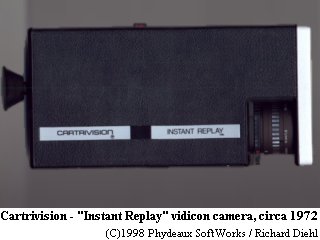


Cartrivision MCA-0001 video camera made by Eumig (Original 2005 Posting) Here is an interesting camera! Made for Cartrivision Inc. in the early 1970's by Eumig in Austria. Very light, it weighs only about three pounds, runs on 18 volts DC, originally supplied by the Cartrivision VCR deck. The instant replay has a trigger switch on top for starting & stopping the VTR. A zillion of these cameras turned up on the surplus market, really really cheap in the late to mid 70's. The amateur TV community went ape over these! More than one ham operator has beamed is grinning mug into the either with one of these! As of 2019, these cameras are still plentiful if you take the time to search for them. They are NOT that rare, Cartrivision made thousands of them in anticipation of huge sales that never materialized. The down side is their relatively complex power and timing requirement. A camera alone, in clean complete condition is worth about $25 as a nick nack in your curio cabint. Operating, with a power supply, they could be worth as much as $100. No more than that! Beware insane sellers on Ebay. The Instant Replay has an f 1.9, 3:1 (9 to 30mm) zoom lens and through the lens (optical) viewfinder. For storage, and to prevent burning the vidicon target, the camera has a little shutter that closes down over the front of the lens. Internally, the Instant Replay uses a 2/3"vidicon (type 8844) giving a very good picture under most conditions. It has a small detachable hand grip which can be removed for tripod mounting. Overall, a sweet piece of engineering! Read the [INSTANT REPLAY CAMERA USER'S MANUAL] [HOME] [ELECTRONICS PROJECTS] |